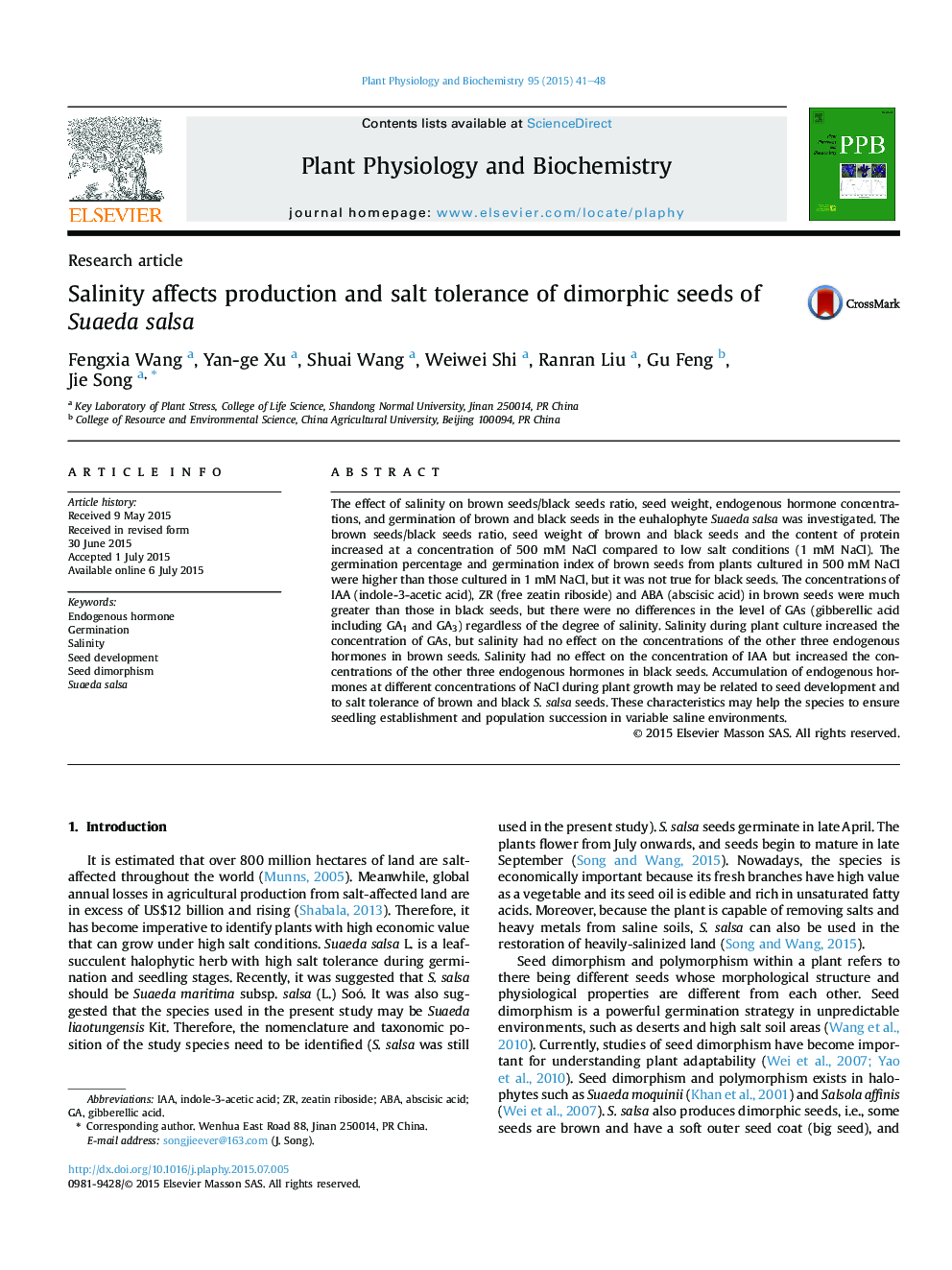| Article ID | Journal | Published Year | Pages | File Type |
|---|---|---|---|---|
| 2014855 | Plant Physiology and Biochemistry | 2015 | 8 Pages |
•Salinity during plant growth improved the brown seeds/black seeds ratio and the seed weight in Suaeda salsa plants.•Salinity during plant growth increased salt tolerance of brown seeds, but it was not true for black seeds.•Endogenous hormone accumulation in dimorphic seeds may be related to seed development and to seed salt tolerance.
The effect of salinity on brown seeds/black seeds ratio, seed weight, endogenous hormone concentrations, and germination of brown and black seeds in the euhalophyte Suaeda salsa was investigated. The brown seeds/black seeds ratio, seed weight of brown and black seeds and the content of protein increased at a concentration of 500 mM NaCl compared to low salt conditions (1 mM NaCl). The germination percentage and germination index of brown seeds from plants cultured in 500 mM NaCl were higher than those cultured in 1 mM NaCl, but it was not true for black seeds. The concentrations of IAA (indole-3-acetic acid), ZR (free zeatin riboside) and ABA (abscisic acid) in brown seeds were much greater than those in black seeds, but there were no differences in the level of GAs (gibberellic acid including GA1 and GA3) regardless of the degree of salinity. Salinity during plant culture increased the concentration of GAs, but salinity had no effect on the concentrations of the other three endogenous hormones in brown seeds. Salinity had no effect on the concentration of IAA but increased the concentrations of the other three endogenous hormones in black seeds. Accumulation of endogenous hormones at different concentrations of NaCl during plant growth may be related to seed development and to salt tolerance of brown and black S. salsa seeds. These characteristics may help the species to ensure seedling establishment and population succession in variable saline environments.
